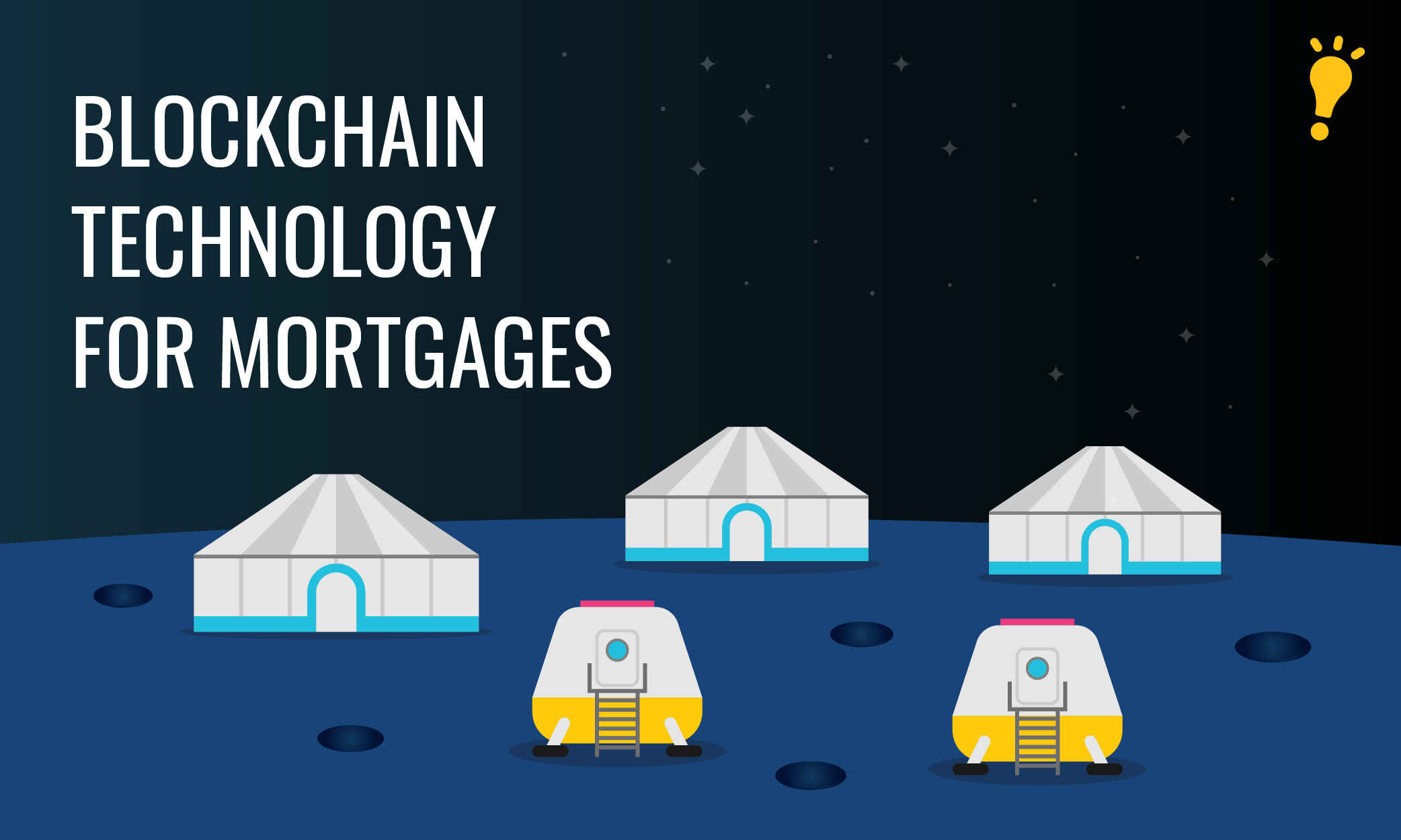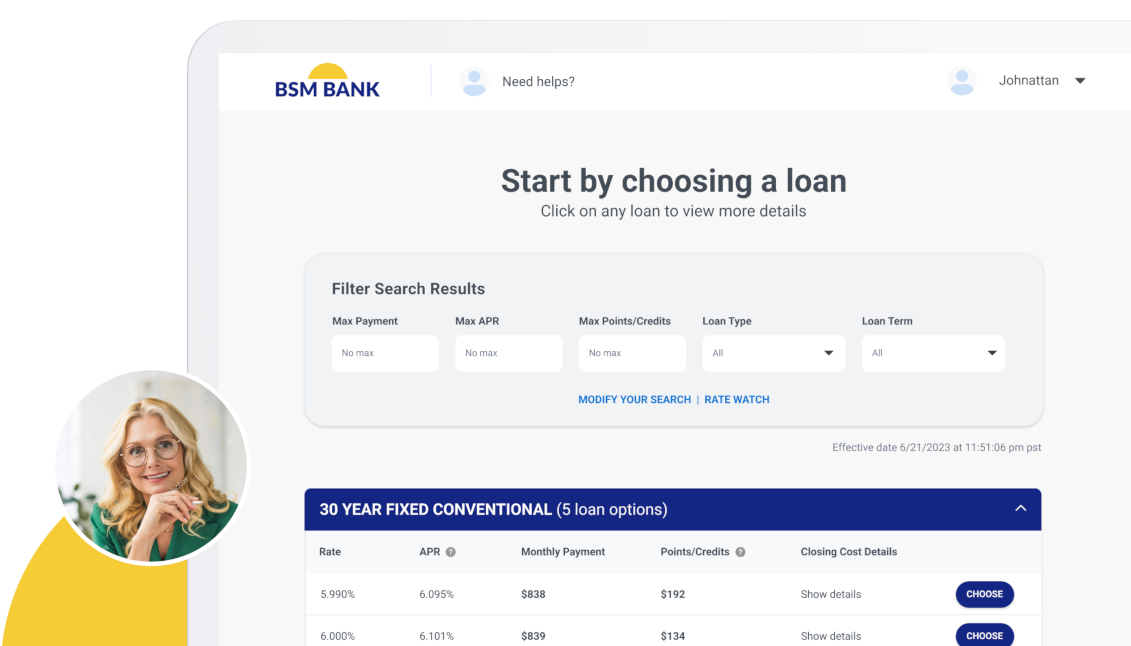Ian Ferreira, founder and CEO of Liquid Mortgage, describes the blockchain mortgage lending model and its significance in the industry.
What is a blockchain mortgage? We’re familiar with the emerging technology, but how exactly does it work when applied to mortgages, how will it impact the industry and when will we see widespread adoption? We reached out to blockchain technology and mortgage expert, Ian Ferreira, to gain a more in-depth understanding of the tokenization process, borrower and lender benefits, documentation and tips for lenders interested in implementing blockchain within their mortgage origination business.
SABRINA PARK: Please describe to our audience how the blockchain tokenization process works—then, specifically, how a mortgage can be tokenized to create a unique loan-level digital asset.
IAN FERREIRA: The word “tokenization” is frightening and confusing to most people. Some, including many “experts,” throw the term around as if it is some complex, abstract concept most will never understand. In reality, it is very simple.
In the mortgage industry, every loan has some type of identifier (numbers, letters or combination of both). The originator, loan investor, securitization trust or any other party may have its own unique identifier that relates to a specific loan. The main point of the identifier is to reference one specific loan.
Tokenization is the process of creating a digital reference (identifier) to a specific asset, but this reference is created on a blockchain rather than on a document or in a database. The importance of creating this reference on a blockchain is the record cannot be altered by errors, bad actors, or any other outside force. The digital reference is permanent, verified by multiple parties, and backed up multiple times on servers around the world.
The tokenization process begins with a token issuer. While issuers may choose different methods and different blockchains to execute the tokenization, the concept is generally similar. The first thing I need is an account on a blockchain, which will allow me to create, issue, and transfer assets (among other things). Think of this as opening a new bank account. When I open the new account I am given two ID’s, one a public ID (think username) and one a private ID (password) which I can use to give my signature on any transaction.
Now that we have an Issuer Account, we also need an account to securely hold the tokens, let’s call this a token Holder Account. This will become important in a minute. Now let’s issue a mortgage token. I have a $200,000 loan I have just originated. As a token issuer, I am going to create a new asset on a blockchain called MTG01 to reference this single mortgage. I tell the blockchain I am going to create and transfer 200,000 MTG01 tokens from the Issuer Account to the Holder Account. This asset will always be referenced by the Issuer Account public ID and the MTG01 asset name, preventing duplicate and imposter assets from other accounts.
Before transferring, I can choose to apply different security features to the tokens. For example, I can choose which parties are able to hold the tokens, whether I need to authorize any future holders, whether I can revoke the tokens at any point from bad actors, and if I want to cap the amount of tokens ever issued referencing this asset (all options a good, safe idea!). Now I use my private ID (or password) to sign the transaction, and the tokens are transferred from the Issuer Account to the Holder Account immediately.
Once the tokens are transferred to the Holder Account, I can now change the permissions on the Issuer Account to lock it forever. This prevents the Issuer from ever issuing more MTG01 tokens (fixed supply). Any tokens returned to this Issuer Account are considered retired and can never be re-issued. We have now created a digital asset, MTG01, referencing our loan with a fixed supply of 200,000 tokens referencing $200,000 in principal balance due and transferred those tokens to the Holder Account.
Having created this new digital asset, we have also now created a digital record of ownership. We know the Holder Account is 100% owner of this loan at issuance (recorded on the permanent blockchain, updated instantaneously). If any principal or interest are paid by the borrower, we know exactly whom to distribute these funds to based on this record of ownership. Let’s assume this Holder Account doesn’t want to hold the full loan (tokens), she could sell 100,000 tokens to a new Account B (approved by the Issuer), leaving the Holder Account and Account B each with 100,000 tokens. When a new borrower payment is received, we will look at the blockchain and see MTG01 is owned 50% by Holder Account and 50% by Account B, thus sending half of the payment to each holder.
Additionally, any borrower principal paydown would decrease the amount of token outstanding by sending that amount back to the Issuer Account and retiring those tokens. Assume the first borrower payment includes a $1,000 principal payment. The amount of MTG01 outstanding following the payment would be 199,000 corresponding to the new $199,000 balance due on the loan. This permanent record can now be used to calculate new interest payments, manage PMI requirements, or update other loan terms.
In general, tokenization allows us to permanently track an asset over time, time stamp payments, trades, ownership of loans, and provide many other benefits. Think of it simply as a permanent digital reference (identifier) of a loan which could bring many additional benefits over time.
SP: You were a panelist on “Talking Blockchain: Empire Startups NYC Fintech Meetup” in 2018, where you and the other speakers, in various industries, agreed that blockchain technology should “run silently in the background.” Can you expand on this as it relates to the borrower experience if applicable, or expand on the relation to the back-office lender experience?
IF: As with most other technologies (computer or other), the vast majority of people simply do not care how the functionality works, as long as it does work.
For example, when you turn on a light switch, do you ever wonder how that light bulb turns on? Some people would likely say there is a filament in the bulb and some wires from the switch to the junction box that somehow causes the light to illuminate. However, that would be the wrong answer—it only includes what you can see in your home. The reality is that electricity is created by coal, natural gas, wind, water, solar, who knows. It could be different depending on the time of day and demand, likely far from your home. Does it matter that the electricity goes through multiple substations and maybe a transformer here or there to get to your switch? It doesn’t matter—until your lights, internet, and cell phone charger stop working.
Subscribe to BeSmartee 's Digital Mortgage Blog to receive:
- Mortgage Industry Insights
- Security & Compliance Updates
- Q&A's Featuring Mortgage & Technology Experts
Blockchain technology should be similar. If you spend 15 minutes with blockchain experts, you will hear things like hash rates, cryptography, public keys, private keys, permissioned blockchains, public blockchains, etc. In order for the technology to be successful, product builders need to create user experiences that give the benefits of the technology (turn the lights on), while not burdening users with how the technology works (getting power to the building). Given the nature of blockchain, this can all be made transparent to the end-user if he or she wishes, but it should not be front-and-center.
From a borrower’s perspective, the technology should be used for transparency and efficiency. Servicing transfers, for example, are extremely inefficient and cumbersome for borrowers—and the transfer has nothing to do with them. Actually, I can speak to a real-world example involving myself. My wife and I bought a house and the mortgage was issued around early December. The loan was immediately transferred to a trust (I know this because I was a mortgage trader and portfolio manager—most wouldn’t know). The servicing was also transferred, causing us to receive multiple letters notifying us to send our payment to a different location starting in February. I called the “new” servicer around January 25th and they told me they hadn’t received the loan yet. I called on February 1st (due date) and they told me to call back in 20 days, I couldn’t make a payment because the loan hadn’t been received. My immediate response was, “So you want me to make a late payment because the servicing was transferred and you have no idea where my loan is and when you will receive it?” Answer: Yes. Borrowers should be able to make a payment anytime, and we should be able to transfer those funds immediately to the loan holders, with immediate confirmation to the borrower the funds have been received. We can do this with blockchain, without exposing the underlying technology details.
For lenders and loan holders, the value is just as important. Once a loan file is complete and purchase agreement has been made, all parties should be able to sign off on the loan and agree to terms. This agreement among parties can be securely and confidentially posted on a blockchain during the initial tokenization process. We can also use this time to validate the originality of the loan file. If anything in the loan file changes over time, we will know immediately by comparing it to the original file reference. Once the loan is sold to a loan investor/holder, all borrower payments, cashflows, and trades are posted to the blockchain for complete transparency. Providing a simple interface for all parties to view the transactions allows the technology to “run in the background.” Loan holders, borrowers, and regulators all have access to the underlying records if they choose, but true adoption will come when we allow users to simply turn the lights on and not worry about how the electricity was generated in the first place.
SP: How important is documentation throughout this process, or is documentation as we know it now a thing of the past, with blockchain ledgers being the new documentation, especially since blockchain is still an emerging technology and this lending model hasn’t yet reached widespread adoption?
IF: Documentation is still extremely important throughout the process, but now we have a different accounting system for documentation. For example, the blockchain we use allows us to build permissions and signing authorizations into each account. If I am an investment firm that holds a large number of loans, maybe I need to have five unique individuals sign off on each loan onboarding and each trade. I can build authorizations into the blockchain saying I require one Executive, two Senior Managers, and two Mid-Level Professionals to sign off before any transaction is final. If anyone tries to submit this transaction without the requisite number of sign offs, the transaction will fail.
Once the appropriate signatures are received, the blockchain record is posted with all signatory IDs posted within the transaction. If a regulator or internal audit person comes in to see who signed off on a specific transaction, one can immediately show the signatures provided.
As for documentation during the origination process (not our focus), there could be several solutions. Documentation of identity, income, assets, credit, etc. could all be posted to a blockchain as validation of existence and accuracy. Once posted, these validations would be permanent and the validator IDs would be visible to any third-parties attempting to validate the initial transaction. Blockchain technology does not eliminate documentation, it simply provides a means to capture and validate current documentation methods permanently.
As with any new technology, adoption is a process and will take time. Most likely, blockchain processes will run in parallel to current processes for the amount of time it takes industry players and regulators to become comfortable. Early success stories will come from firms that implement internally, prove the technology and viability, then bring that technology to market broadly over time. Again, this emphasizes the point of running the technology “silently in the background.”
SP: What are some tips for Lenders interested in learning about and implementing blockchain within their mortgage origination business?
IF: I would start by saying if you are reading this interview, you are already starting down the right path. Education is key, don’t let the technology, terms, or “experts” scare you away from learning more. Pick up some high level books (plenty out there) that speak to the technology generally and potential use cases across industries. A number of large consulting firms have also opined on possible use cases within the mortgage industry, which are widely available on the internet. Skip the deep technology books, unless of course you want to build your own blockchain. If you are technically inclined, take a course or go on a specific blockchain website and start developing today. You’ll learn more by building an example project or issuing your own tokens.
While a small number of firms are attempting to implement the technology within different segments of the industry, we are still in the very early stages of realizing the impact of blockchain technology. There will not be one solution in the end, but hopefully multiple solutions that can work together to make a more efficient and transparent industry for borrowers, lenders, investors, and all other parties.
The biggest piece of advice I have for all industry professionals is to keep an open mind. Take a step back from your daily responsibilities, think about the true pain points in your business and if those can be fixed. Imagine if you could take the entire process, or industry, and reimagine it. How would you build it the second time around? Blockchain technology will not be the entire solution to your problems, I guarantee that. But maybe there are key pain points, or areas you believe the technology could be a positive fit, then implement a small test solution.
The main risk to such a large industry is we become complacent with current processes and fail to innovate. Companies who implement new technologies will create a better, cheaper, faster borrower experience and will likely win in the end. Maybe blockchain can help you achieve this, maybe not. Keeping an open mind and educating yourself are the best ways to make sure you and your business are not left behind.
END OF INTERVIEW
Get updates from BeSmartee sent directly to your inbox! Subscribe to our newsletter here.




